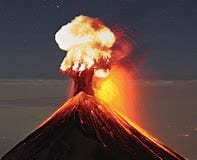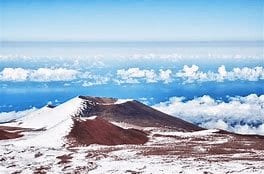Natural Resources
Volcanoes: All you need to know

Named after Vulcan, the Greek god of fire, Volcanoes are as fascinating as they are destructive. An example of just how terrifying Nature can be, volcanoes have existed for as long as time is known and have caused massive disasters.
But on the other hand, they have been a subject of wonder and worship among mankind for just as long. So here we are with a complete guide on volcanoes- an all you need to know.
Let’s start from the basics –

What is a Volcano?
According to the Oxford Dictionary, a volcano is a mountain or hill, typically conical, having a crater or vent through which lava, rock fragments, hot vapor, and gas are or have erupted from the Earth’s crust.
Simply put, an opening on the Earth’s surface from where molten rocks and magma escape from the Mantle (the layer between Earth’s Core and Crust, starting about 30 miles underground), due to high pressure.
A volcano consists of a magma chamber (where magma and gases accumulate), a conduit that is a passageway for the magma to come to the surface (after which it is called Lava) and a vent that is the opening. The vent may be surrounded by a crater, which forms as a result of eruptions.

Types of Volcanoes
There are a lot of ways to classify a volcano – based on the period of eruptions, based on the type of eruption and even on the shape.
On the basis of the type of volcanic eruption, volcanoes are divided into Magmatic eruptions (involving decompression of gas within magma), Phretomagmatic eruptions (involving compression of gas within magma) and Phreatic eruption (which involves superheating of steam via contact with magma).
On the basis of the periodicity, volcanoes can be classified as Active (which erupt frequently), Dormant (which have not erupted in recent history but can anytime) and Extinct (inactive) volcanoes.

When comes to shape, there are Cinder cone volcanoes (symmetrical cone-shaped volcanoes) which are the most common type, Composite Volcanoes or Stratovolcanoes (built of layers of alternating lava flow and considered the most violent), Shield Volcanoes (gentle slopes with really wide bases) and Lava Domes (formed when the lava is too viscous to flow).
Why are Volcanoes important?
We live on the surface of Planet Earth but that wouldn’t have been possible without volcanoes. Yes, not only these huge storehouses of energy helped in creating an oxygen-rich atmosphere on Earth but are also responsible for creating more than 80% of the Earth’s surface!
And though they are dangerous with high destructive power, they are necessary for maintaining the natural balance. Also, without volcanoes, most of the Earth’s water would still be trapped in the crust and mantle.
Volcanic dust, ash, and rocks decompose into a fertile soil called andisol, with an exceptional ability to hold water and nutrients and mineral sources are often found in the vicinity of volcanoes.
And the best part about volcanoes- they give birth to Hot Springs!

Trivia
Now that we know what are volcanoes and why they are important, here are some interesting facts about them:
• Around 75% of the world’s active volcanoes are found around the ring of fire, a 25,000 miles long zone found in the Pacific Ocean.

• There are 1500 active volcanoes in the world at present.
• Mauna Kea in Hawaii is the tallest volcano on Earth while the title of the tallest in the solar system goes to Olympus Mons on Mars!

Mauna Kea

Mauna Loa
• Mauna Loa, which is next to Mauna Kea, is the largest volcano on Earth.
• The most active volcanoes on Earth are located in the United States, Russia, Indonesia, Iceland, and Japan.





























